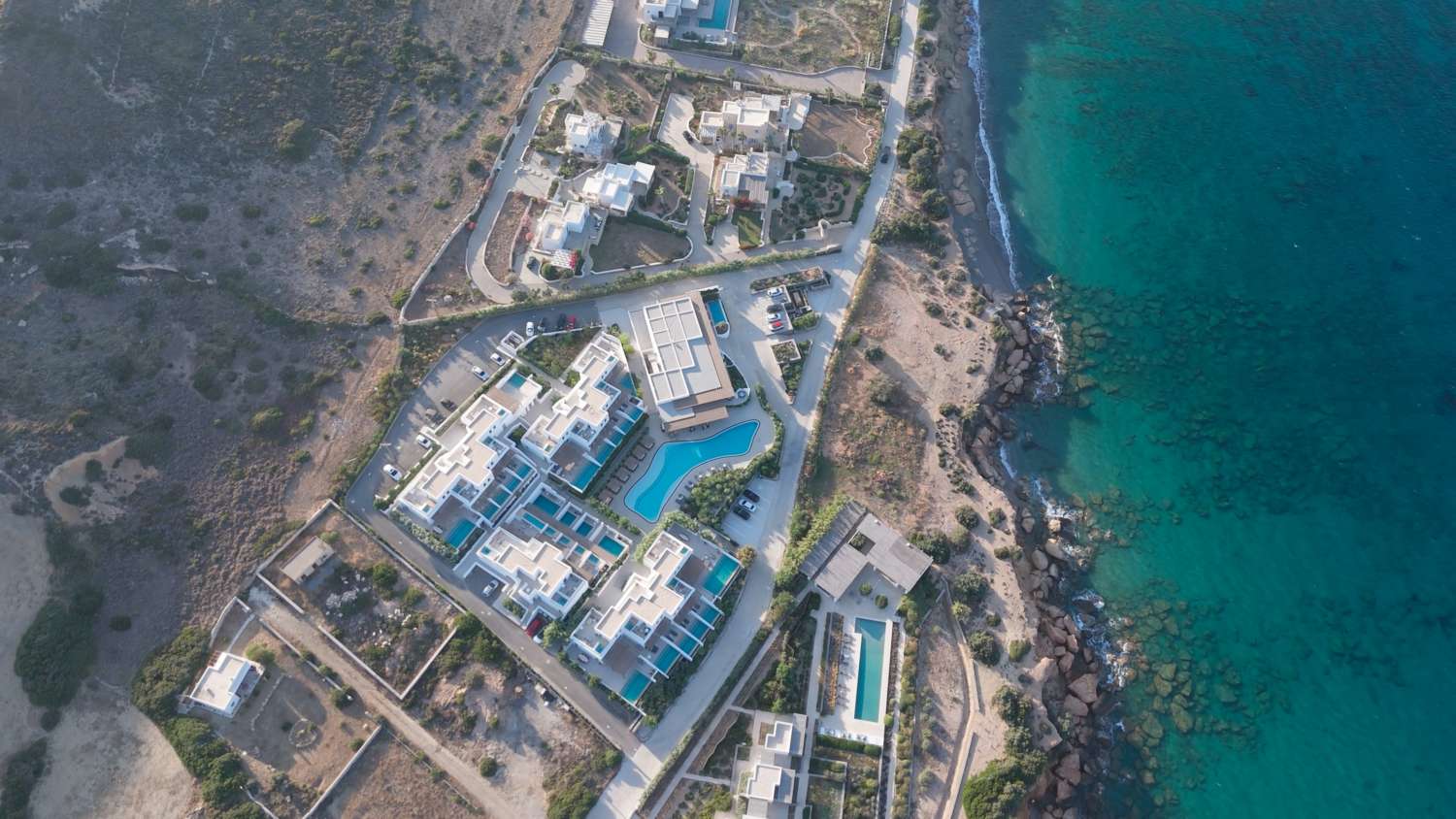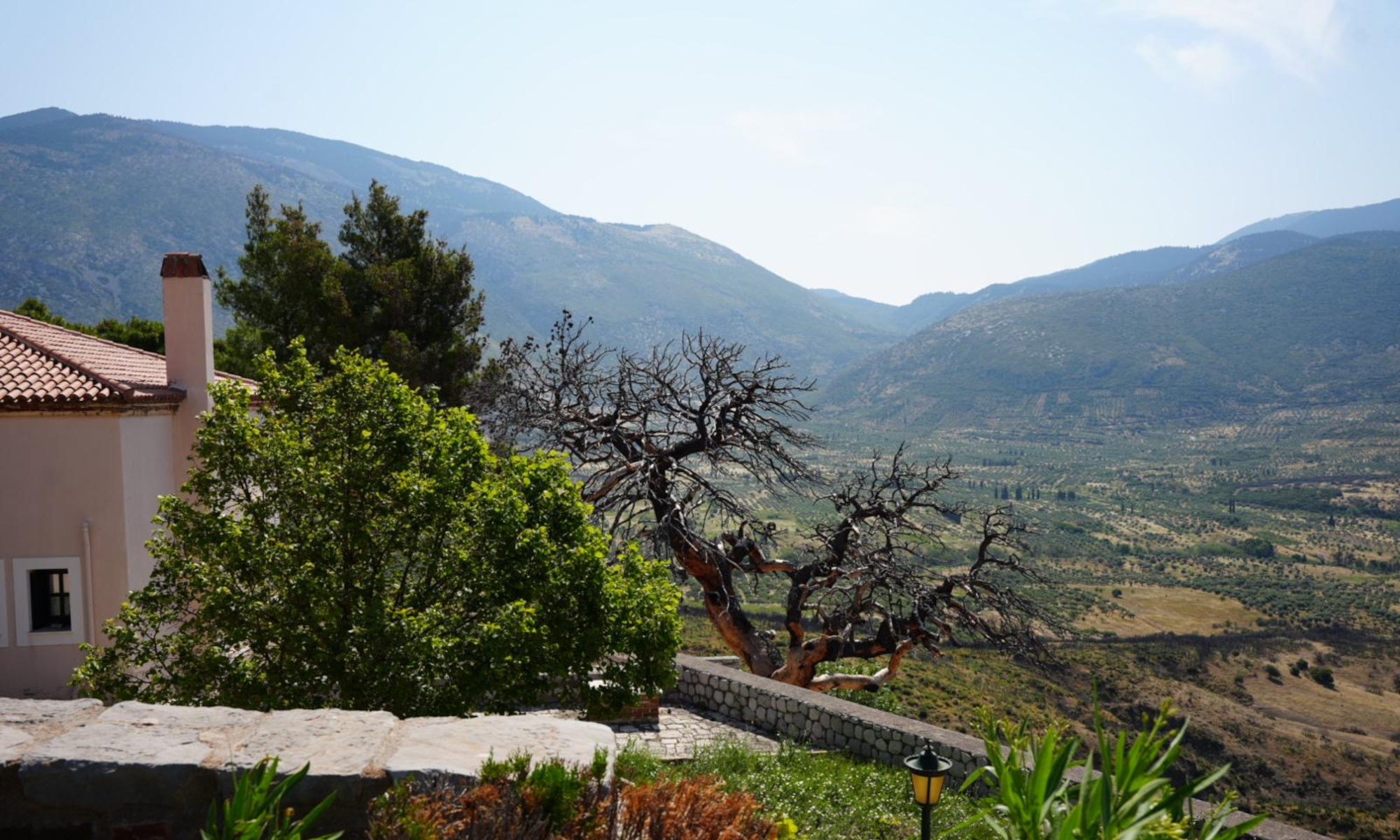By Valerio Castellini

I sit aboard Dimitris and Eleni Skiadis’s kaiki fishing boat in a quiet bay just south of Aliki. The sun lowers itself behind white Cycladic limestone, painting the scattered homes along the shore gold. A crane towers over a half-finished development nearby.
“These houses belong to an American,” says lifelong fisherman Skiadis, scanning the complex. “He brought his boat, too, and kept an American flag on it for months.” He adds: “Only two houses in this entire bay belong to locals.” A glance at Google Earth’s archives confirms him: most of the homes weren’t even here a mere 20 years ago.
Like many other Cycladic islands, Paros is struggling to keep up with the wave of gentrification that has striked the archipelago in the last two decades. Paros has led the Cyclades in building permits for five consecutive years—surpassing Mykonos and Santorini—and now ranks first in the region in square footage under construction. Plots and homes change hands rapidly—over 2,000 registered sales from 2020 to mid‑2024. The island, long hidden between its flashier neighbors, has suddenly become a speculative prize. Eventually, the fear is that the upsurge of these irreversible projects will destroy what once was a paradisiac escape.
Architect Angeliki Evripioti of Evripiotis Architects, who splits her time between Paros and Syros, watches these changes closely. She describes clients paying premium for large, glass‑fronted homes cut into steep slopes—“semi‑excavations” that double buildable area by slipping through legal loopholes.
Traditional Cycladic terraces, once natural check‑dams against storm runoff, are paved over. “They have been traditional here for thousands of years, some of these walls are centuries-old,” explains Nicolas Stephanou from the Save Paros organisation. The result? When Paros endured its worst flash floods in 20 years this April, streets in Naoussa became mud chutes, and infrastructure strained under devastation.
“These buildings violate the topography and landscape of the Cyclades,” says architect Angeliki Evripioti, who has worked across Paros and Syros since 2010. She tries to balance minimalism with vernacular tradition—but it’s not easy. Demands have changed, together with the people that land in Paros. Now everything seems to be about profit, with no regards for the islands’ needs and long-term sustainability.
Architectural overreach had moved beyond aesthetic concerns, becoming increasingly entangled with questions of access and sustainability. “It’s like putting 100 people in a room meant for 10,” says realtor Filia Grigoraskou, president of the Realtors Association of Paros & Antiparos. The island’s infrastructure has not kept pace with its real estate boom: narrow roads buckle under summer traffic, and restaurant reservations are harder to find than building permits. Despite a 2012 urban plan that mapped out no-construction zones, no follow-up study was ever implemented.
Many properties now under construction are actually based on permits issued before 2012. Older, more permissive criteria. After several extensions following the financial crisis and the Covid period, this might be the end of it. “People are trying to materialize their rights before they lose them,” explains Sophie Katsipi, a Parian realtor and member of the Association. The result is a last ditch building boom across Paros—particularly outside urban settlements, where large properties can still be developed under grandfathered rules.
Simultaneously, the island’s basic services are thinning. “People coming to work in tourism are from everywhere—even overseas,” she notes. But those who sustain the local population—teachers, healthcare workers, municipal staff—are increasingly priced out. A town built for slow rhythms now struggles to serve its own residents.
There are efforts to market “authenticity”—to package Paros as a place of slow life and vernacular beauty. But even that can ring hollow. “Tourists don’t appreciate rural Paros,” Katsipi admits. “I don’t want another sushi place—I’ve had enough!”
